In 1987, Campagnolo came out with an indexed shifting system they called 'Syncro'. It didn't work very well, and was generally tempermental. In 1989, they came out with an updated 'Syncro 2' that changed the spring arrangement, and updated to a higher capacity -- a large rear shifter "drum" diameter meant more cable could be taken up, to shift 7 speeds -- and possibly 8 as well.
I recently acquired more than a reasonable number of sets of Syncro 2 shifters. For a couple of reasons. First, I find them mechanically interesting -- and I'll discuss how they work shortly, with pics. Second, they're attractive -- same lines and design as the C-Record/Chorus/Croce d'Aune shifter bodies. Third, they pull enough cable to run with 8 or 9 speed in friction. Which brings us to number 4: they can be run in friction mode, but can also be easily modified to be a pure friction shifter. At which point, they're just as good as any other friction shifter.
Click any of the pictures for an larger version.
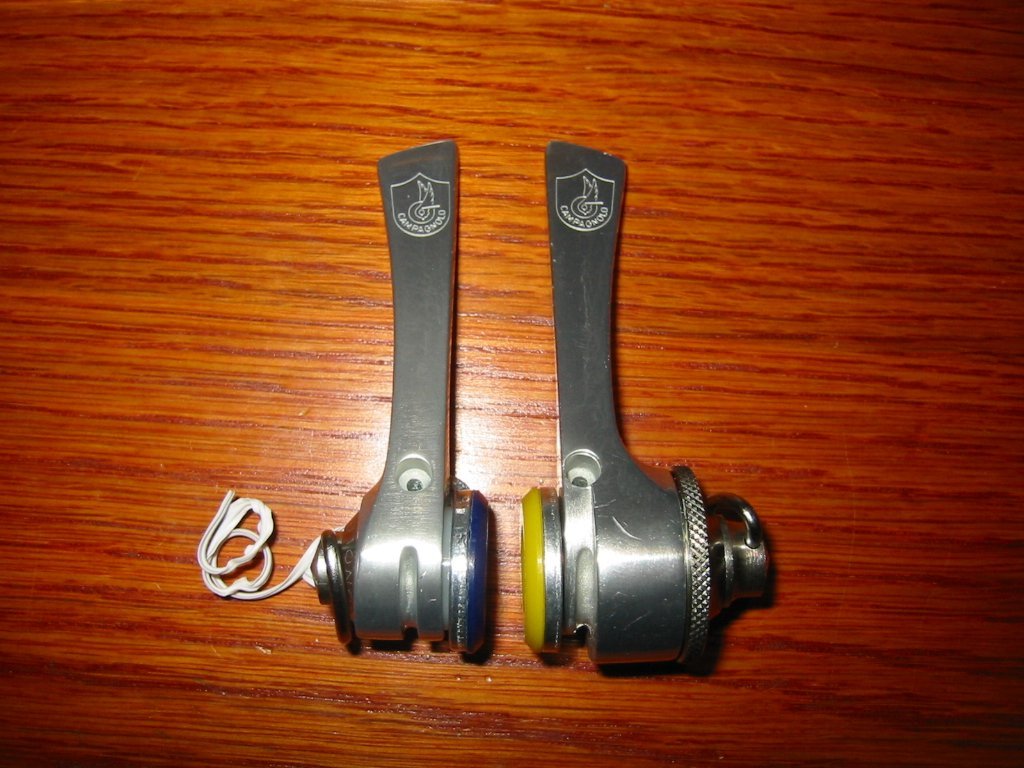
The left/front shifter is a standard friction shifter. I tried to get all fancy with something that looked like a parts explosion diagram.
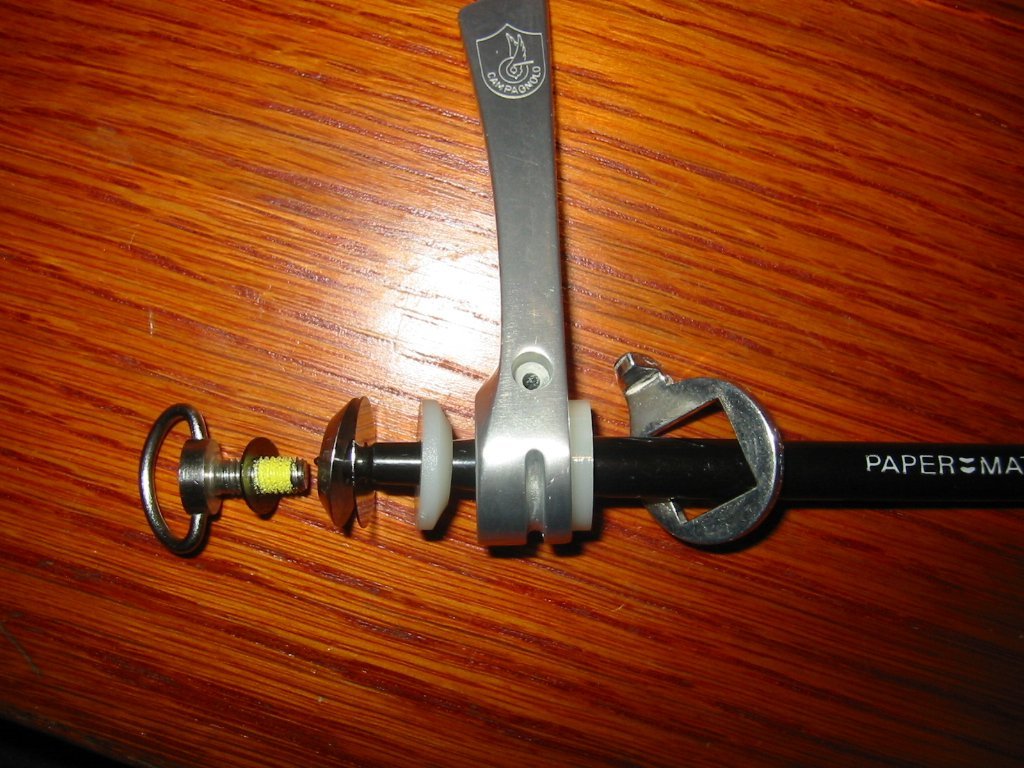
The right/back shifter is entirely different, but easy to understand if you have pics.
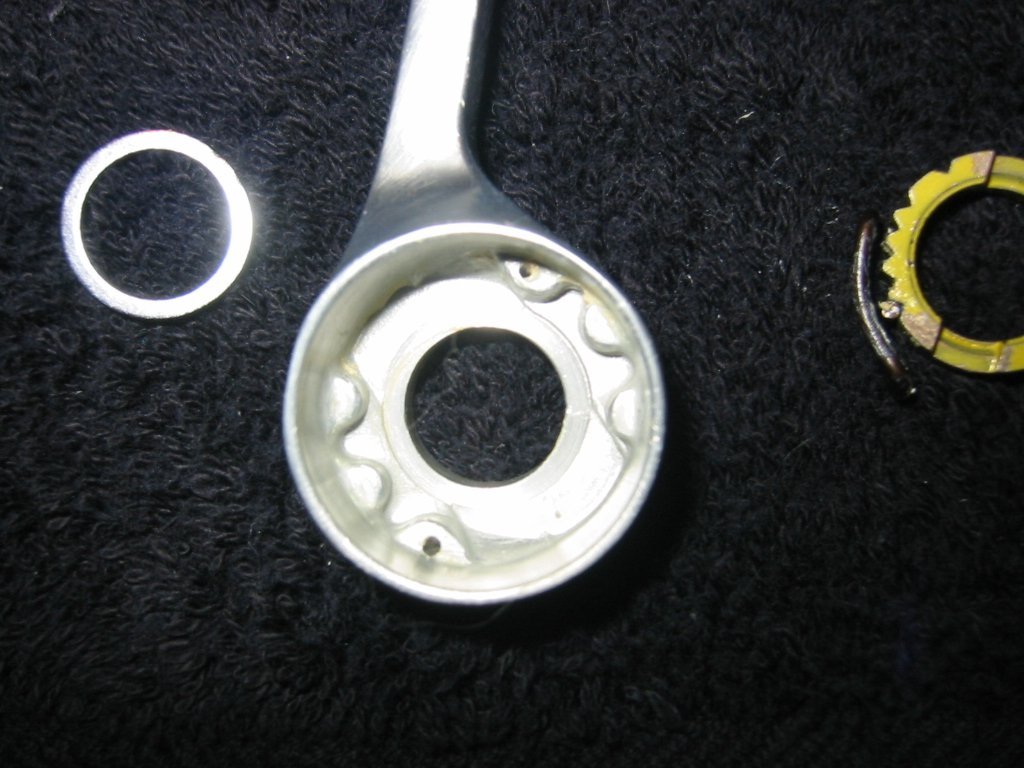
The above is the inside of the lever. Note there are 2 small holes. 2 springs go in these holes, and create tension against....
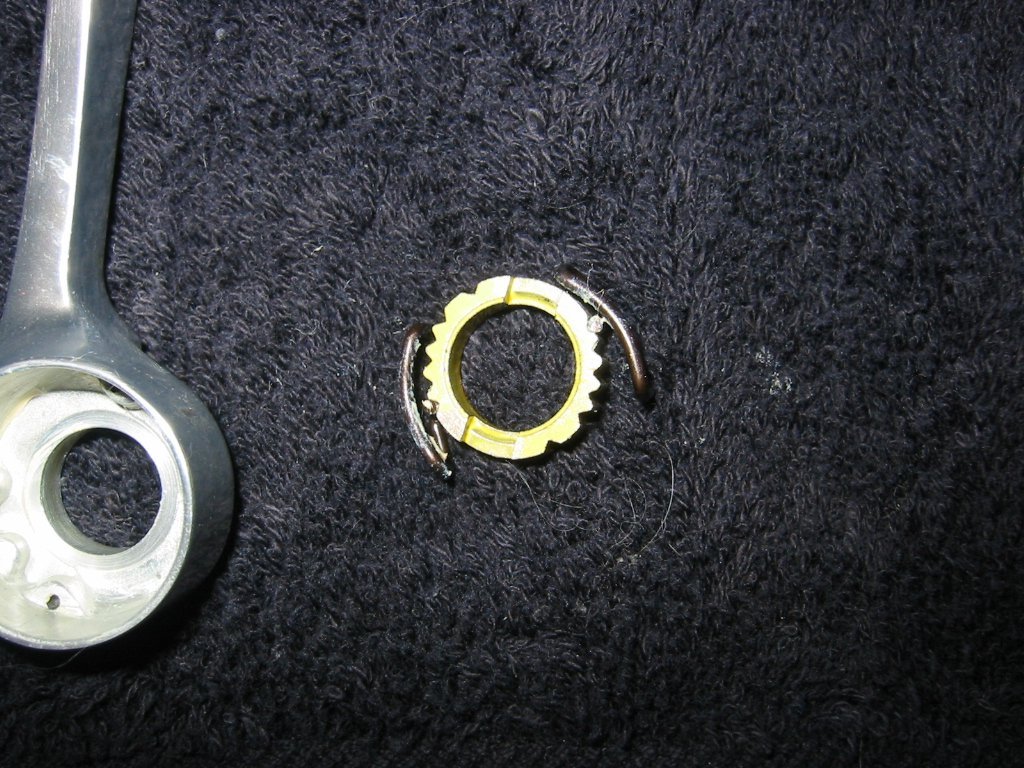
the toothed boss collar, show above. Yellow is for 6 speeds. Count the indentations on each side, and you'll see 6. Other colors exist for 7 speed, and apparently there are 8 speed collars from the indexed barend shifters. I can't confirm that.
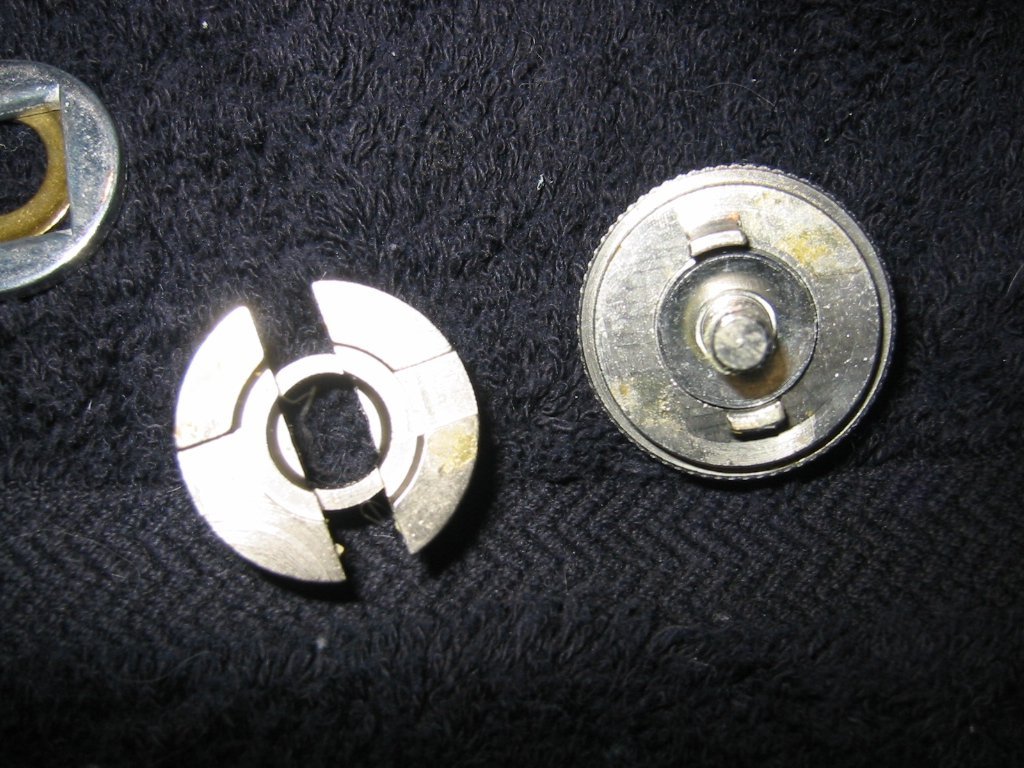
In the notches around the center of the collar, there are 2 cutouts. The large round metal piece above, to the left, has 2 cutouts matching the positioning of these notches. It also has the shaft around which the lever pivots. You'll see this in later pics. The other piece contains the retaining screw, and a spring loaded, knurled collar. It also has 2 teeth that go through the cutouts of the other piece, and engage the indentations in the collar.
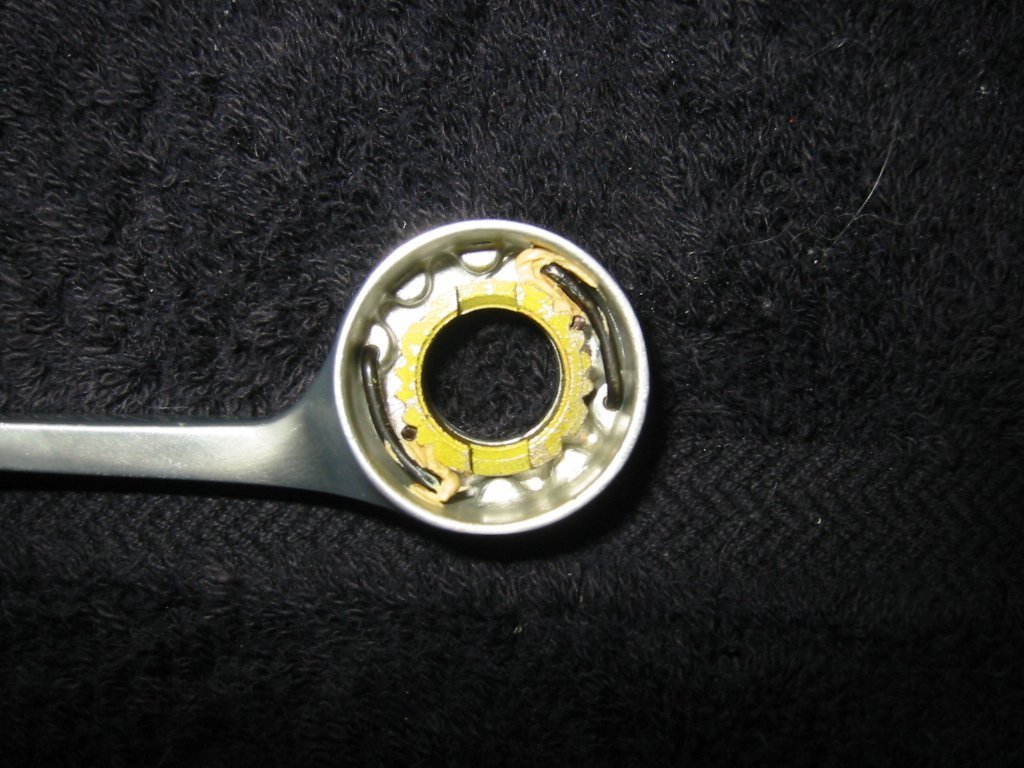
The boss collar, with springs, inside of the lever.
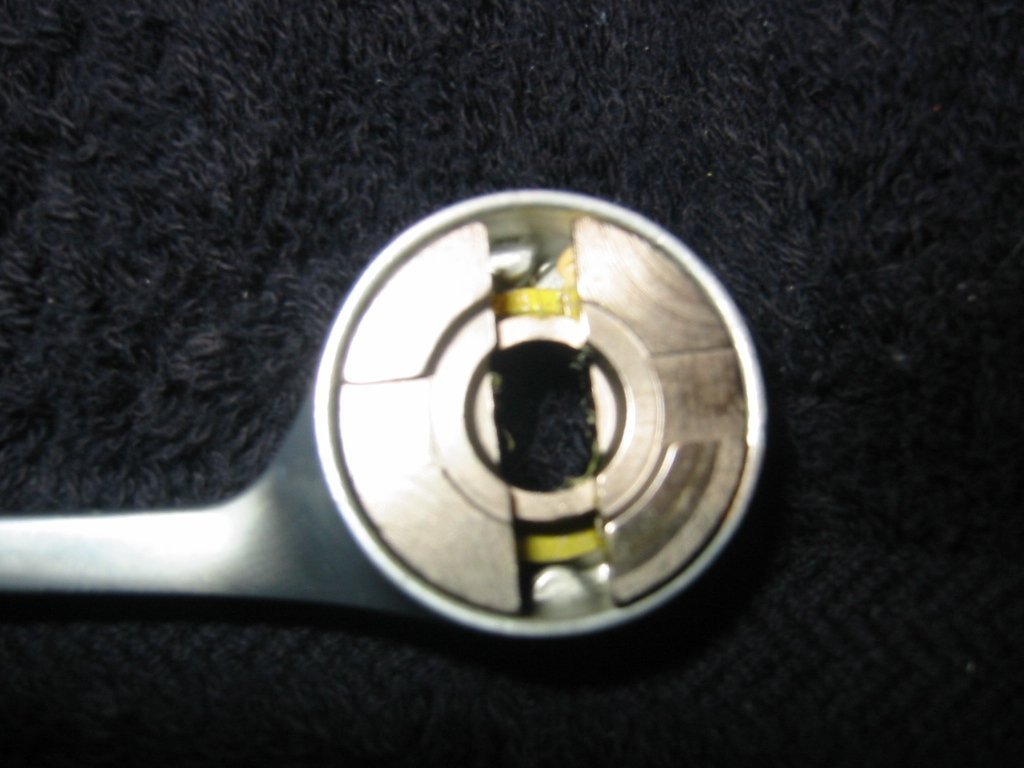
The round metal piece, over the collar and springs, inside the lever.
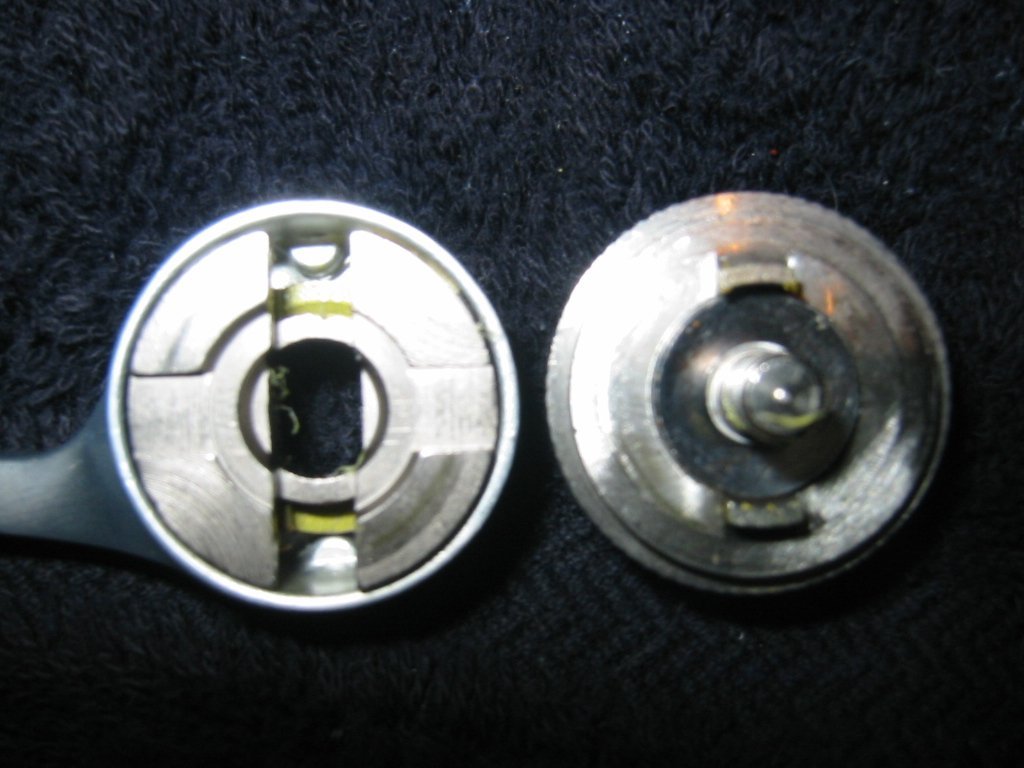
Ok, so here's how the whole thing works. In the above picture, imagine the whole thing screwed together, with the notches, cutouts and teeth aligned as in the picture. The metal piece mates to the shift boss, and is held in a single position. The teeth of the knurled retention device are held in to place by this metal piece. The teeth hold the boss collar in one place as well. The shifter lever, and the 2 springs inside, are free to move. The springs have a shape that creates a sort of "pin" that rides in the grooves of the boss collar. Moving the lever moves the spring pins from one notch to the next.
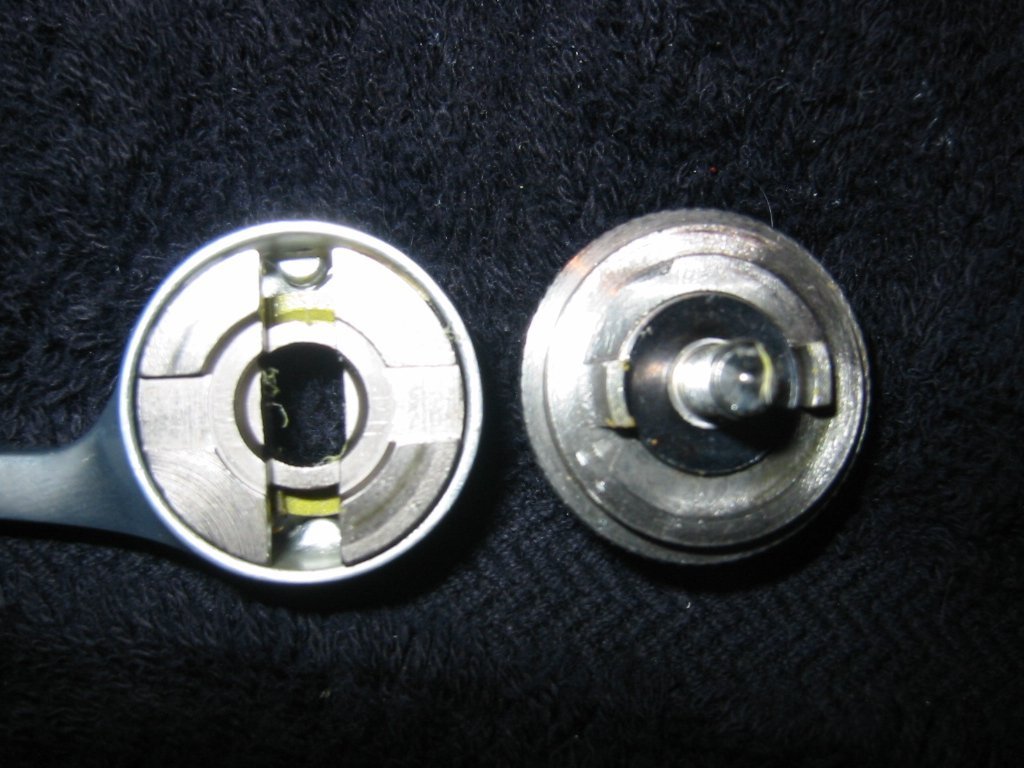
By pulling the knurled portion of the retention thingy out, and aligning the teeth the way show above, the boss collar is released. Its spring loaded, so you can easily pull outward, and rotate it 90 degrees. The spring pins hold the collar in one place, and they pivot freely, as the teeth from the knurled part no longer keep it in place.
Sounds complex, but its pretty simple. Now, you can pull the knurled portion and use it as a combo index/friction system. That'd work, though indexing is tempermental. To convert them to pure friction, you can actually just remove the springs and optionally the boss collar -- the springs are all that is required to move. Removing the boss collar may create a little slop in the levers -- something I'd just as soon avoid. They're light enough that anyone who would consider running them would be hard pressed to justify caring. Anyhow, after conversion, they make nice large capacity friction shifters that don't need to be pulled obscenely far to take up 8 and more rear freewheel/cassette speeds.